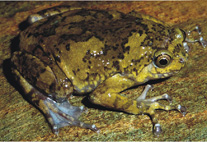Abstract
One of the most poorly known books on natural history was a volume by Bengt Andersson Euphrasén in 1795 that gave an account of the fauna of Saint Barthélemy in the Caribbean Lesser Antilles (ca. 17°53′52.47″N 62°51′2.0″W). The only taxon he reported that has been recognized as an original description is a plant, Iresine angustifolia (Euphrasén, 1795) (family Amaranthaceae), and this only happened because the species was highlighted by Swedish botanist Johan Wikström in the early 1800s. The zoology in Euphrasén’s book has not been considered by most workers. Euphrasén had hoped that the Royal Swedish Academy of Sciences would publish his manuscript, but well-known Swedish naturalist Anders Sparrman, who was a disciple of Carolus Linnaeus and the keeper of the natural history collections in the academy (see Broberg et al. 2012), advised against it, stating that a description of Cancer was the only thing new in it (and without any illustration as well) (Nyberg 2013). Clearly, Sparrman was wrong about Iresine angustifolia, as well as a few other species (Nyberg 2013). There are in any case, over 200 plants and 111 animals listed in his book. Euphrasén eventually had the book printed by a private publisher in 1795, a year before he died in misery (Nyberg 2013). In general, Euphrasén's (1795) book is only mentioned in passing or with some passages quoted in history books on Saint Barthélemy, or St. Barth, as a Swedish colony. Few people have seen Euphrasén’s book and still fewer have read it. A German translation was printed in 1798, but has remained as neglected as the original.

